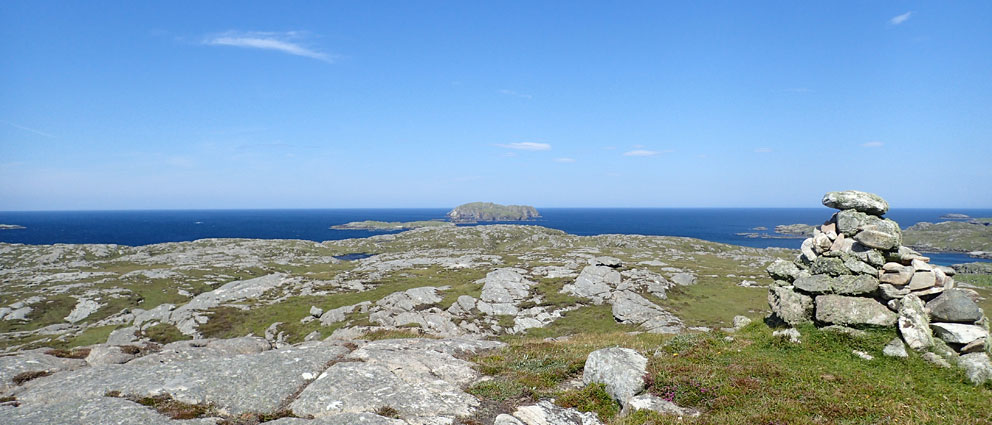On Lewis, two miles southeast of the famous Callanish Stone circle, lies one of the most beautiful beehive cells of all. It is also the easiest to visit, lying as it does on Cnoc Dubh (NB 232 302), just above the B8011 highway to Uig (Lewis).
I must have driven by the Cnoc Dubh beehive a dozen times over the years and never noticed it. (It is visible from the highway). I first learned about it earlier this year when I read Alastair McIntosh's excellent book Poacher's Pilgrimage. The author pays a visit to the cell as part of an epic walk from Rodel to the Butt of Lewis.
The cell had been vandalized many years ago by someone who thought it was a Druid's house, and as such, linked to the devil. About 15 years ago, armed with photos of how the cell once looked (see this link for an example), Seamus Crawford (of Lewis) restored this beautiful structure.
Having read about the cell in Poacher's Pilgrimage last February, a visit to Cnoc Dubh was very first thing I did on a visit to Lewis in July. Mr. Crawford did some amazing work here, and inside the cell you can see the markers placed on the stones to aide the restoration.
Aside from the monastic cells on the Garvellachs, the Cnoc Dubh cell is constructed of stones much larger than any other intact cell I've visited. No one knows how old the cell is, but it was know to be inhabited in the 1860s. With its turf covering in place it should last for at least another century.
Next time you are in Lewis be sure to pay a visit to Cnoc Dubh. You can park off the road just where a dirt track climbs the hillside east of the highway. A two-minute hike up the track will take you to the cell. It is a thing of beauty.








































